“Editor’s Note: The following historical sketch of the founding and growth of the First Presbyterian church was prepared by Mrs. Callie Eaton (Dr. Rachel Caroline Eaton, Ph.D.), county superintendent, and read before the congregation at the commemoration exercises of the 36th anniversary of the founding of the church, held in Claremore, Sunday, March 1st, 1925, with an all day program.
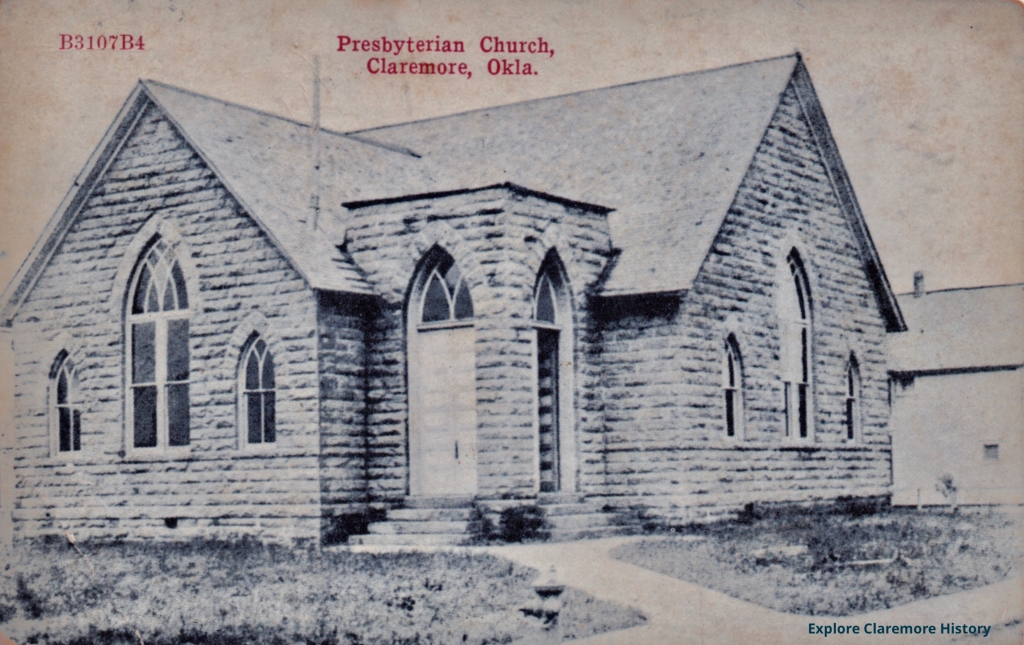
“The First Presbyterian church, of Claremore, organized in 1887 by Dave Allen in a small dwelling called the Gage house, situated a block west of the Frisco depot, and dedicated in 1889, was, in the beginning a small frontier organization, the result of the zealous and devout religious activities of various denominations, Methodists, Presbyterian, Baptist and others. Since its beginnings lie deep in the past lives and experiences of the community it is not remarkable that the celebration of its anniversary has proved of interest to many people of various denominations who have contributed freely from the storehouse of memory, interesting facts concerning the life of the church and the community.
“While the superstructures of this church has been reared within the last few decades, the foundations were laid much earlier, not in stone and mortar, but in the moral and religious aspirations and endeavors of the early pioneers, most of whom were men and women of high standards of citizenship, with definite cravings for culture and refinement, and with deep and sincere religious convictions.
“This is an eminently suitable occasion, therefore for acknowledging our heritage from the past while we take stock of the present, and look forward to the glowing prospects of the future with keener insight and clearer vision.
“In the midst of these pleasant modern surroundings, it is difficult to realize that less than a century has passed since buffalo and deer grazed up and down this pleasant valley and lay down to sleep on the ground occupied by this building; that the howling of wolves, the cry of the panther, the scream of the eagle and the war whoop of the savages were familiar sounds hereabout. An Indian village once occupied the eastern outskirts of this town, the fame of whose chief, Black Dog, is perpetuated in the name of a creek hard by; and a chief town of a powerful tribe of Indians covered many acres of land a few miles distant, where strange orgies and heathen rites were performed only a few decades ago. From such a past and from such conditions has Christianity redeemed the wilderness, covering the valley and the prairies with homes and churches and replacing heathen religious rites with Christian worship. Out of such a past this church grew and developed its present organization, housed in this pleasant and modern edifice.
“In this connection it is eminently suitable that we pay a brief tribute to the often underrated itinerant preacher, who at a very early time and in the face of hardships and suffering carried on the evangelistic activities along the remotest frontier. Many of these early preachers were able and eloquent men, who going on horse back from house to house visited the homes, where they were heartily welcomed, spending the night and holding family prayers morning and evening. Much of their work was personal and heart to heart, and included the children whom they encouraged to memorize Bible verses and the Catechism. This phase of their work can hardly be overestimated.
“And whenever opportunity offered they preached. In the occasional school house, in groves and under brush arbors the frontier community gathered to sit on the rude board or the puncheon benches while they listened to the expounding of the Word by these consecrated preachers whose fiery zeal to save sinners from the burning pit found expression in eloquent words which often struck terror to the heart of the unregenerate, whose feet even stood on the brink of destruction. Nor did they fail to picture the joy and happiness that awaited those who had won the right to enter the Pearly Gates. They visited the sick, comforted the bereft, and in many ways helped to soften the rigorous conditions of the times, for which they were welcomed and revered by young and old. These Godly men now rest in peace, but their good works still follow them.
“Among them were Josiah Henry and Louis Wolf, who preached to the fullbloods of the Dog Creek hills in their own language and to English speaking congregation through an interpreter. Rev. McSpadden, Cowart, Coker, Crawford, Howard, Evans, Lerskov, Hogan, Parks, Yarbrough, Henry Cloud and Kelley are names of some among the white preachers.
“Nor in this connection should the work of the Christian teacher be forgotten. As a rule these teachers of the early rural schools were able, refined Christian men and women who taught good citizenship and the Ten Commandments as diligently as they taught the rule of three: and thus it will be seen that education and Christianity advanced side by side along the frontier as it has been from time immemorial.
“Among these teachers I recall the names of Misses Mattie Cobb and Mary Brewer, Cora and Ada Archer, Bettie and Amanda Smith and others.
“Added to the activities of the preachers and the teachers were those of the good fathers and mothers who tried to bring up their children in the nurture and admonition of the Lord and succeeded fairly well under the circumstances. And so the good seeds were sown and the good work begun long years before Claremore appeared on the map. At West Point services were held in a log house in the early seventies. At Kephart Springs, the Cherokee court house furnished a gathering place from a very early time. Near old Claremore, on the ridge to the northeast, a community church of brown sandstone was began about 1776 and the foundation completed and the walls partly built, when funds failed and tin work was discontinued. Only a few tumbled stones near Ira Moore’s mark this early attempt to build a church. Dave Allen organized a church at Oowala and D.W. Lipe exerted unfailing effort until it was completed, furnishing some of the materials and boarding the workmen who built it. Other public spirited citizens who contributed to the building of this church were Chas. and W. P. McClellan, Dr. A.J. Lane, Mr. Swimm and the Foremans.
“Mr. Allen also organized a little church in a log cabin overlooking the Buster Flat, a good spring determining its location. Here was organized the first Christian Endeavor Society of this community. The first social function of the society was a wild strawberry festival held on the grounds back of the church and the young people from far and near attended it. It was really quite ‘an occasion’ for that time. The unusual character of this organization attracted a good deal of attention and the president of the society was invited to New York for special training in this work. And on the minute book of the society are to be found the names of Nathan, Charles and Gertrude Hanes, Walter and Lucy Burgess, Calvin Merrit, Mattie and Callie Eaton.
“When the Iron Mountain railroad was built and Sageeyah located, the log church house was abandoned for a more pretentious frame building constructed in 1885. It still stands as a memorial to the few men and women who labored and gave of their substance that the community might have a suitable place of worship. Among those most active in the work were Mother Hanes, Mr. Miller and G.W. Eaton.
“As the years went by naturally the life of the community, religious as well as economic, began to converge upon the little village of Claremore growing up on the Frisco railroad, which wound its torturous way down the Dog Creek valley in 1882. A few houses were built, stores filled with merchandise and people moved to town. Again the preacher followed. In the Gage House or in the freight room on cold days and on the east platform of the depot on summer afternoons, Dave Allen, preaching in his shirt sleeves to an attentive if somewhat heterogeneous congregation, left no room for doubt as to the future of the unregenerate. But if his inspired eloquence carried the imagination to the brink of Hell it also transported it to the gates of Heaven. And many a man of those times live a cleaner, better life for listening to Mr. Allen’s sermons.
“Following Mr. Allen came A.D. Jacke, who though stationed at Oowala, soon realized that the time was ripe for building a church house at Claremore. In due time plans were formulated for the building and the house was completed and dedicated in 1889.
“In the beginning the church was not strictly denominational, but in the broadest and truest sense presented the combined religious cravings of the whole surrounding country. Of the 17 charter members two were Methodists, and two were Cumberland Presbyterians; Mr. and Mrs. Benjamin West, Mr. and Mrs. Burns, of Tiawah, William Moore, Mr. and Mrs. J.L. LaHay were among the charter members and John and Maggie LaHay were among the first children baptized into the church.
“Mr. Teece Chambers donated the lot for the church, while Mrs. Chambers, Mrs. Lindsey, and Mrs. Gage formed the committee for buying the furniture. Doc Denny donated the organ. Everybody helped with either money or labor. Not only the people of Claremore but those of Sageeyah, Oowala, West Point and the whole surrounding country contributed something to the enterprise.
“The first pastor was A.D. Jacke, who with his efficient and consecrated wife, soon made the church a real community center. Mr. and Mrs. Jacke were not only devout and zealous Christians, but educated and refined people, and their influence for good was soon felt throughout the entire country. So the little church grew and prospered for many years.
“An economic center for a considerable territory, Claremore early attracted new enterprises; stores multiplied, hotels were built and more people came to town. When a weekly paper was set up, a bank started and a two room brick school house constructed on the ‘eastern prairie across the branch’ the town had begun to arrive.
“The church meantime was undergoing a period of evolution. The Sunday School, with William Moore, as superintendent, was organized to keep pace with the times. Under Mrs. Godbey‘s enthusiastic and efficient management a regularly selected choir supplanted the heterogeneous group of young people who had formerly occupied the vantage point behind the organ for the purpose of ‘helping out’ with the singing. While the missionary society still carried on its works and early church sociables gave place to the Ladies Aid, which soon became an important social factor in the life of the town.
“The years that followed brought swift changes The Methodist and Baptists organized and built churches, the school was enlarged, the population increased and the time came for the Presbyterians to provide more commodious and suitable quarters for themselves. A campaign was accordingly begun and in time sufficient funds raised to build the present structure. The new building was completed and ready for occupancy in 1905.
From time to time since then a good many improvements have been added to the church. A small heating plant for cold weather and electric fans for warm weather, new carpets and pews and a parish house. The old red, blue and green windows, so dear to Mr. Lippert’s heart, have been replaced by ones of more subdued tones. A piano supplanted the place of the old organ, which will give place, in its turn, to a new and better musical instrument.
“The Missionary Society still flourishes, the Ladies Aid carries on the social and religious features of the church for which it was originally intended, the Sunday School has outgrown the church, the choir shows marked musical talent, and thus it is not difficult to see that the day is not far distant when another step forward must be made in order to keep pace with progress.
“Progress is never haphazard, civilization does not develop by chance. Every step of advancement is due to the efforts of some individual or group of people working with a more or less clearly defined plan towards an ultimate goal. Though they may never reach this goal, they motivate forces which evolve something finer and better perhaps than they foresaw. And so the men and women of the past built better than they knew. The pastors of the church each contributed something of lasting value to the community. Mr. Allen with his consecrated energy and his love for the people, Mr. Jacke whose broad experience in Mission fields added to his natural refinement and superior education, were unusually well fitted for laying the foundation of the church.
“Mr. Jake was followed by Mr. C.C. McGinley, a young man was brought direct from the theological seminary fresh enthusiasm and progressive ideas. But he soon passed, leaving as his gift to the church an optimistic outlook for the future and a firm conviction that greater things were in store for Claremore.
“Leonidas Dobson with his ripe experience and romantic career followed Mr. McGinley, and was followed in turn by another young theolog, F.F. Dobson, who very frankly expressed his gratitude to the Claremore church for having allowed him to practice on it and gain his first experience as a pastor. E.H. Broyles and his bride, the sweet singer, followed and served the church efficiently until March, 1900. Richard Dick, from Princeton, the dashing bachelor preacher, came next and was followed by Mr. Lippert, during whose ministry this edifice was constructed. Mr. Findley according to the records was called to the pastorate August 28th, 1901, and served faithfully as pastor until 1909. During that time the membership of the church increased materially. Incidentally, the salary of the pastors during these ranged from $600 to $800, supplemented by $200 from the church board.
“1910-1911, Rev. J.N. McDowell was pastor and it was during his ministry that the Bulgen revival services stirred the town to its lowest depths. After the death of his wife, Mr. McDowell returned to the east. On September 15th, 1912, a call was issued to Rev. W.E. Loucks to become pastor ‘at a salary of $1,200 and one month’s vacation.’ In 1924, he resigned to go to the First Presbyterian church of Sapulpa, and was succeeded by our well beloved Mr. Gardner, now pastor of New Cambria, Mo. For five years he preached and labored for the upbuilding of the church, the Sunday School and the Christian Endeavor. Mr. Gardner was particularly successful in his dealings with the young people and it was due to his activities that the young people’s meetings prospered for a considerable length of time. During these years, Dr. Seth R. Gordon filled the pulpit from time to time, delighting his congregation with his eloquent and scholarly sermons and charming all with his friendly courtesy.
“And last, but not least, comes our present pastor, Clarence Campbell, than whom are not better and to whom there are few equal. High minded, optimistic, well trained and wide experience, Mr. Campbell has broadened the outlook of the church and animated its membership with fresh inspirations. Under his leadership the church advances with speed in keeping with the 20th century. Nor is all the credit for the success of the church due to the pastors. Our own Ralph Lamb, who has filled the pulpit from time to time, who was ordained in this church and who has helped to gather in and concentrate in the church the results of the Christian activities of the surrounding country for the past half century, is too much a part and parcel of the First Presbyterian church, of Claremore, to be left off the list of her ministers although his name does not appear on the minute books as a regular pastor.
“And there are church officers and laymen whose work should not be forgotten in reviewing the history of the church. Among them are Riley Lindsey, the superintendent of the first Sunday School organization in 1887; William Moore, the first superintendent of the Sunday School in the old sway-backed church; Chas. McClellan, who gave liberally to the church fund; Joe LaHay, always active and efficient in church work; F.A. Neilson, a man of generous spirit as well as dignified, distinctive bearing; C.F. Godbey, the church treasurer for so many years; James M. Scott, who as clerk of the session kept such neat and well worded records. There are others: D.G. Elliott, A.E. Diefendorf, Mr. Barhydt, Mr. Mitchell, Mr. Woods and others and others and others.
“And to name the good women who have helped to bring the church up to the present standard would fill several pages. Among those who bore the labor and heat of the early day only a few can be mentioned here. Mrs. LaHay and Mrs. Ross are among these; Mrs. Johnston, who was the faithful organist so many years and Mrs. Liggett, the superintendent of the primary department of the Sunday School, and Mrs. Godbey, in the choir, are some of them.
“The church is but the symbol of the Christian life of the community. The work of its members but the sign of the Christian spirit of its constituancy [sic].
“The hardships of the frontier no longer press upon us and hedge round about, curbing enthusiasm and limiting opportunity. It affords us keen satisfaction to look back today and see how far we have come, and to look forward with clearer vision to possibilities not yet achieved.
“Though we have come far we have not reached the goal, and in the words of Oliver Wendell Holmes continue to say in our hearts:
‘Build thee more stately mansions, O my soul,
As the swift seasons roll.
Leave thy low-vaulted past.
Let each new temple nobler than the last,
Lift thee towards Heaven with a dome more vast,
Till thou at length art free,
Leaving thine outgrown shell by life’s unresting sea.'”
The Claremore Progress (Claremore, Oklahoma). Thursday, March 5, 1925. page 3. Newspapers.com.
To read more stories by Rachel Caroline Eaton, PhD, please look below.
https://archive.org/details/johnrossandcher00eatogoog/page/n12. To READ John Ross and the Cherokee Indians click here. Eaton, Rachel Caroline. John Ross and the Cherokee Indians. George Banta Publishing: Wisconsin. 1914.
https://cdm17279.contentdm.oclc.org/digital/collection/p17279coll4/id/2085/rec/30 To READ “The Legend of the Battle of Claremore Mound” click here. Eaton, Rachel Caroline. “The Legend of the Battle of Claremore Mound.” Essay. Chronicles of Oklahoma. Volume 8, No. 4. December 1930. Pages 369-377.





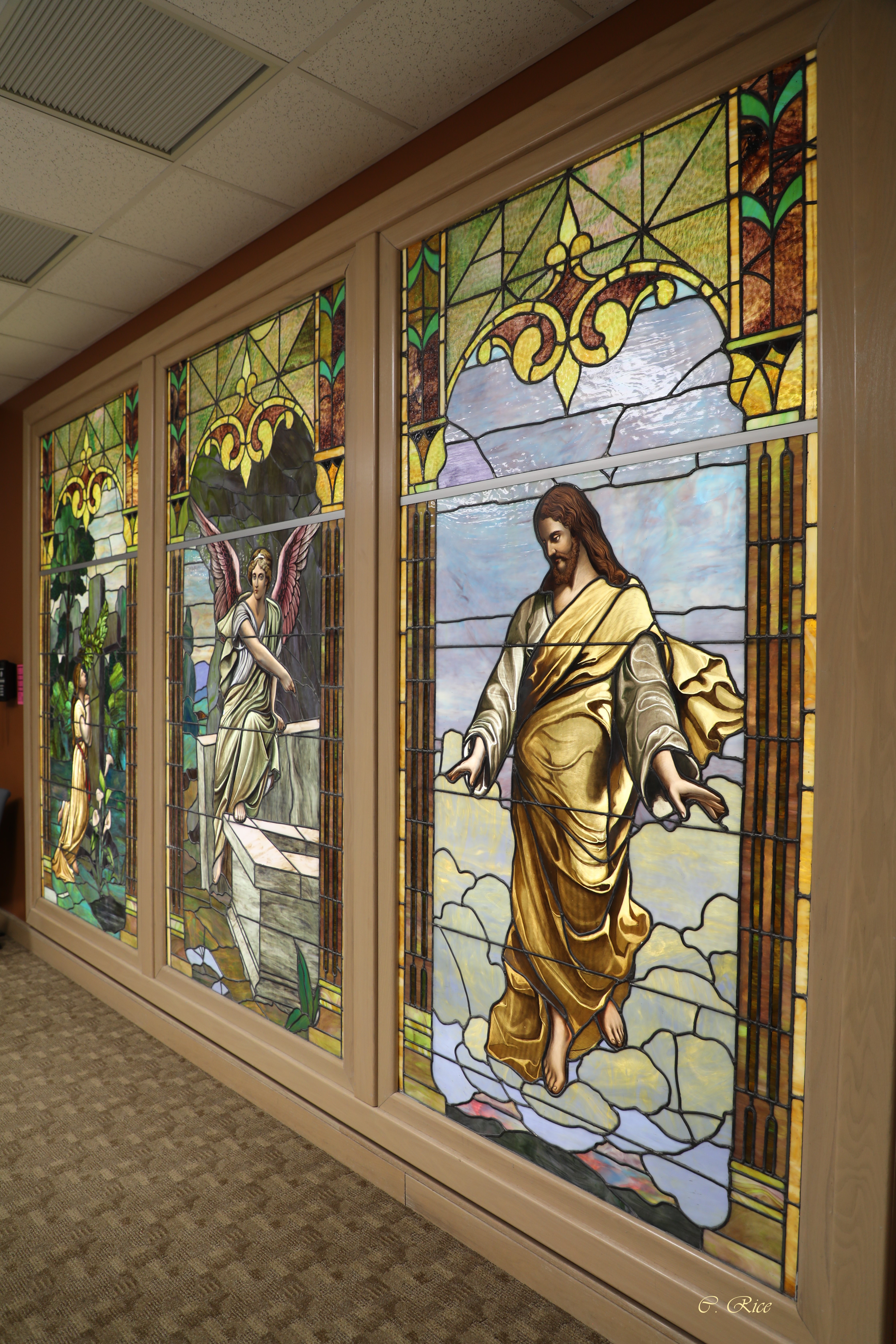
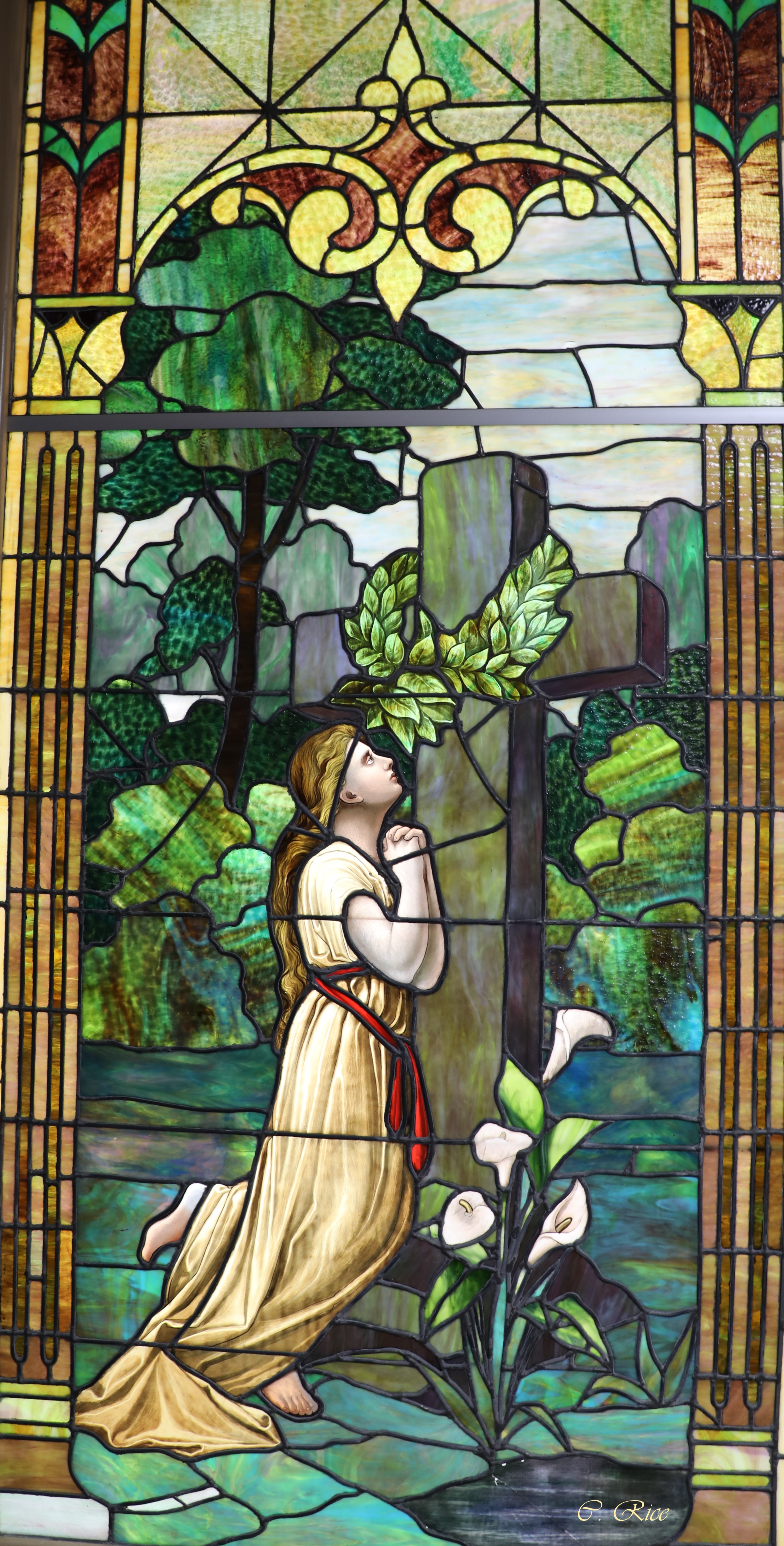
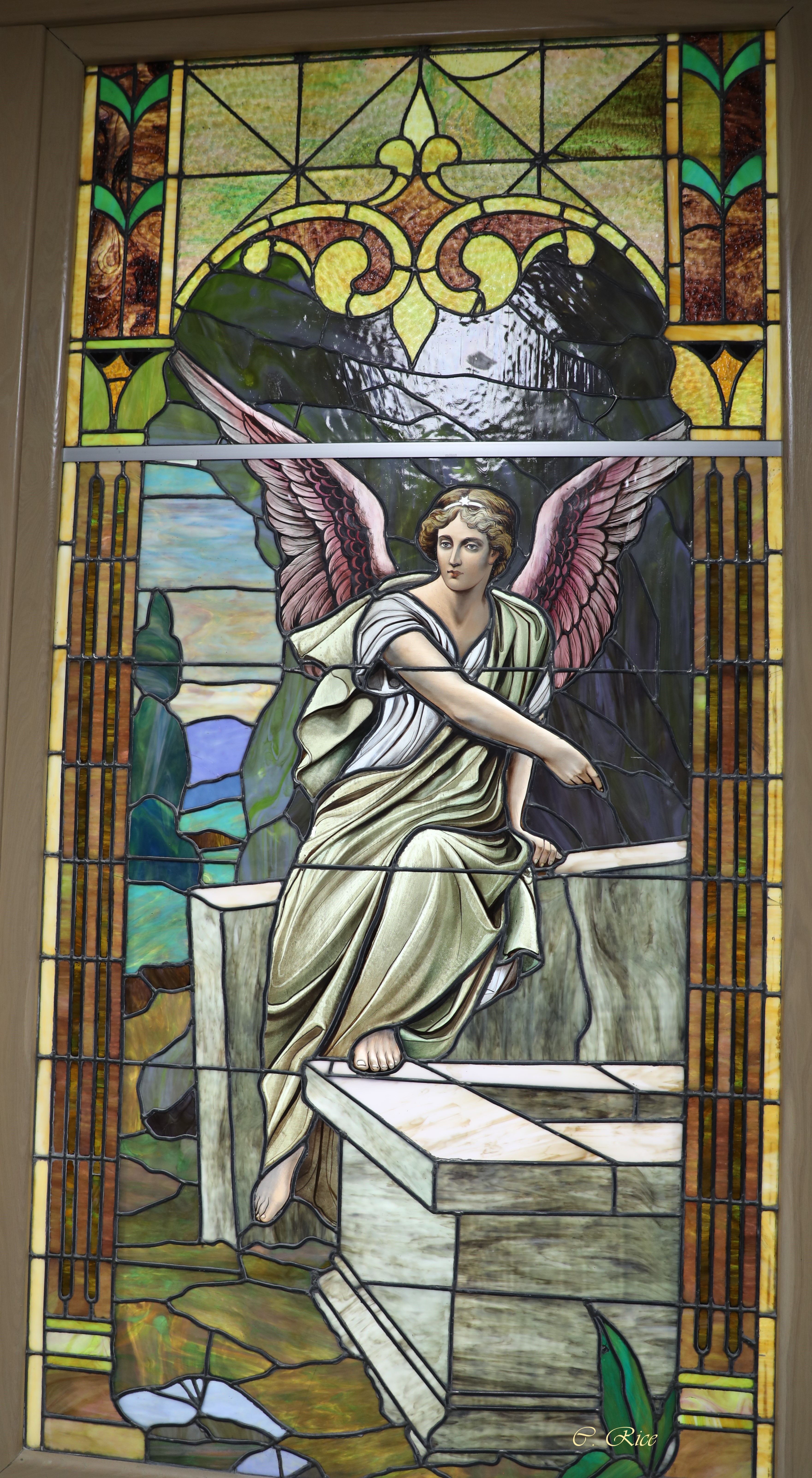
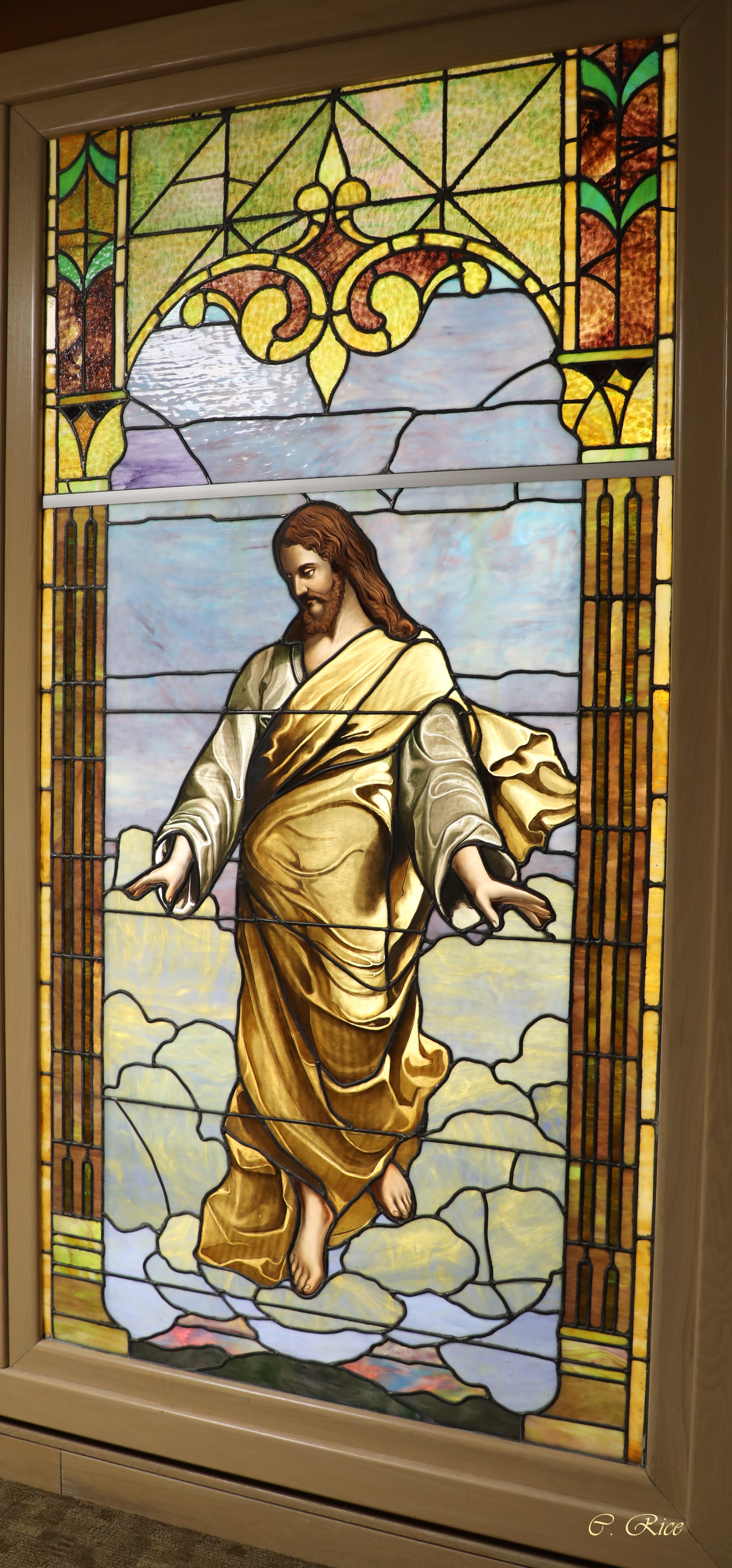
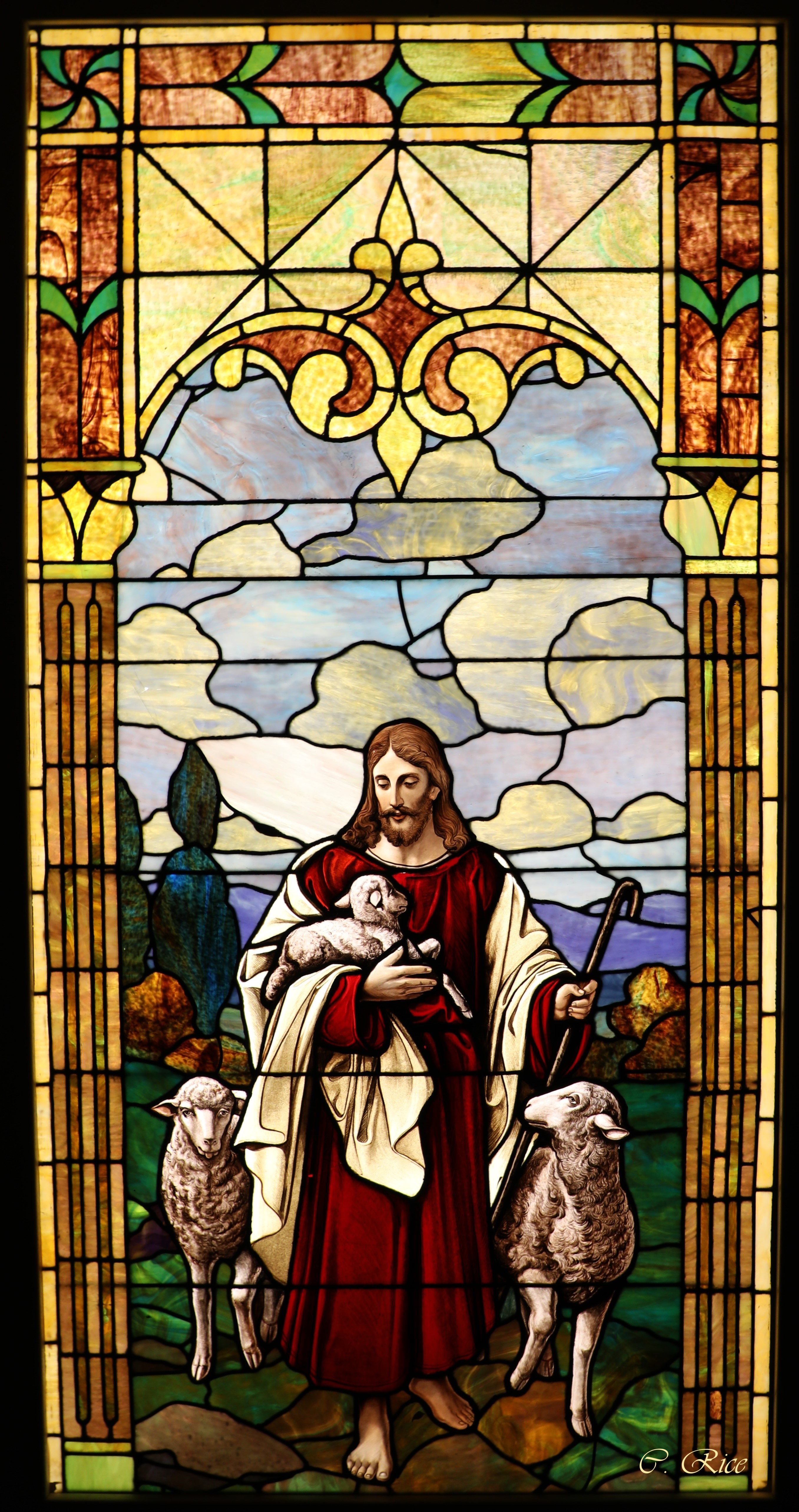
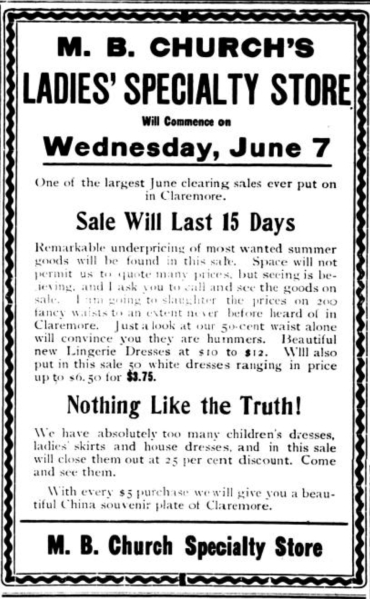




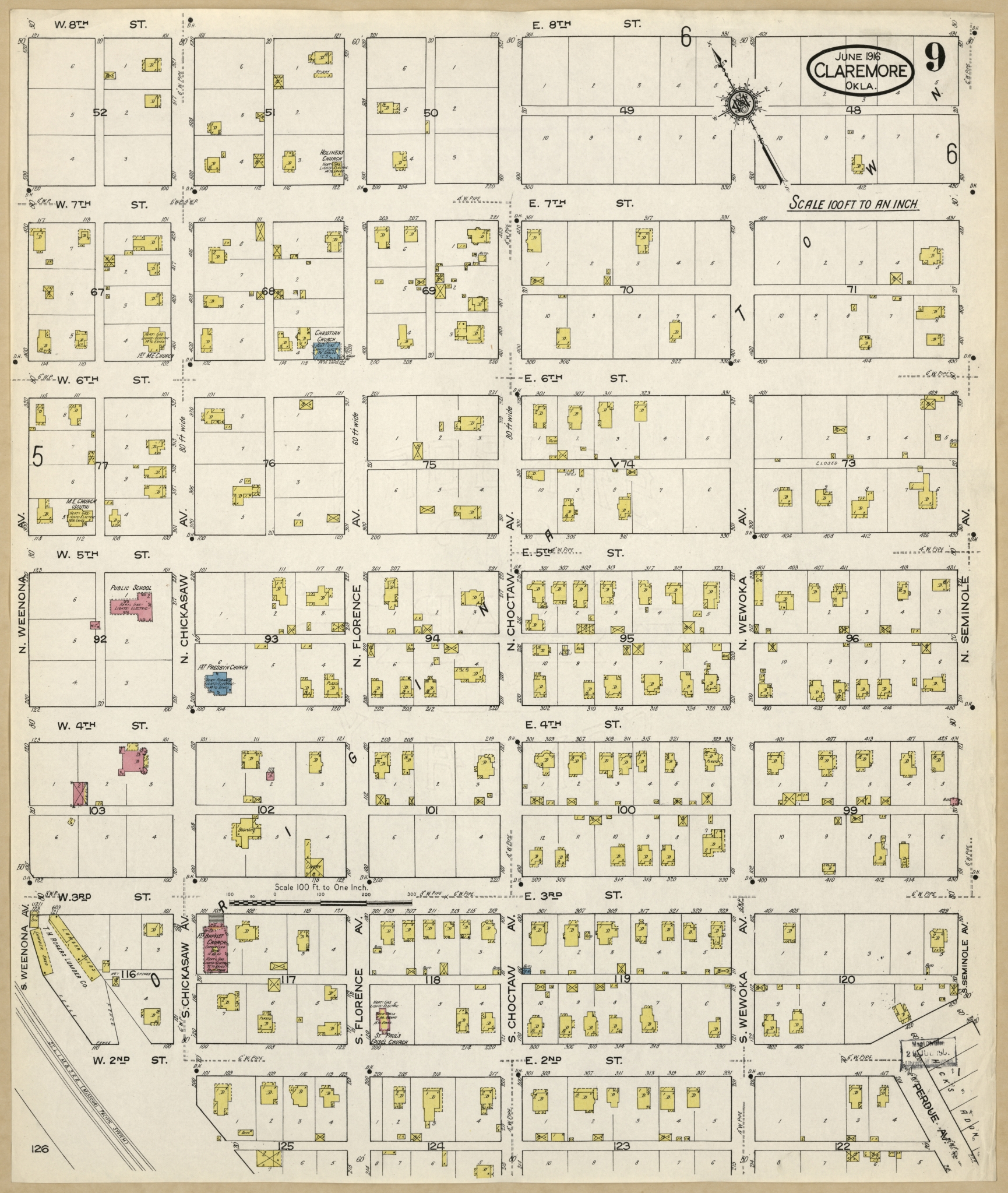
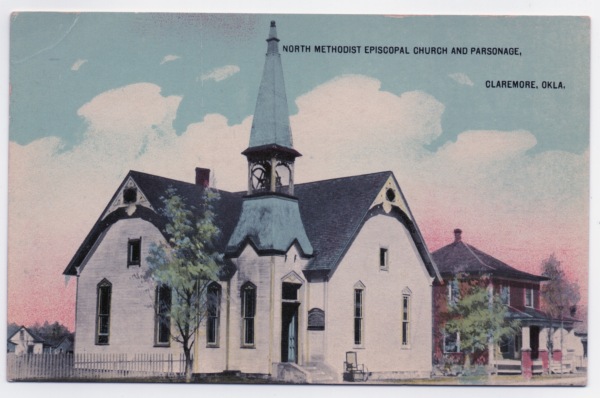
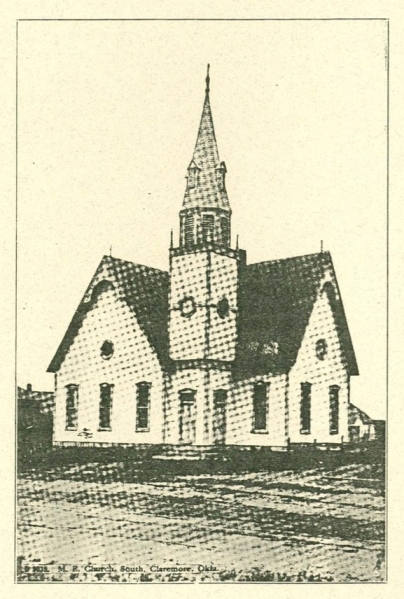
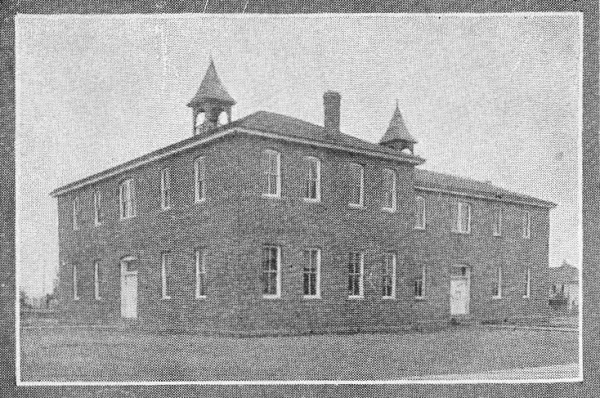
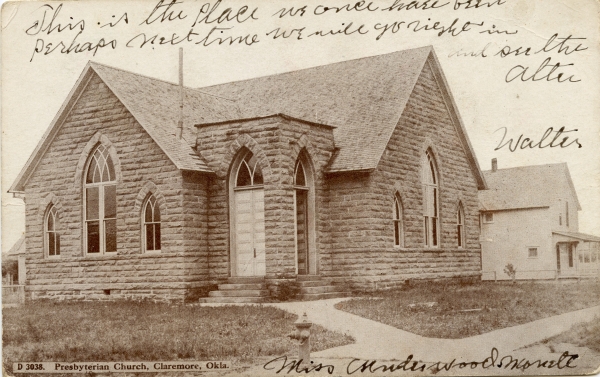
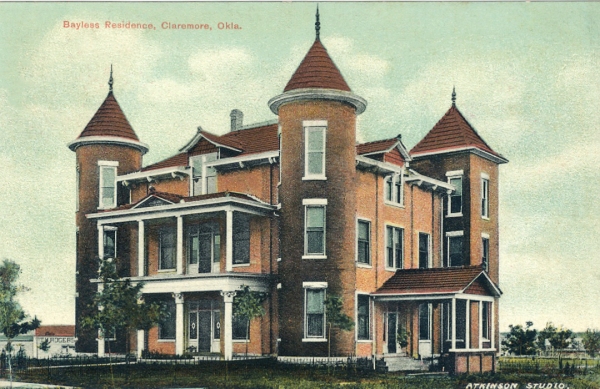
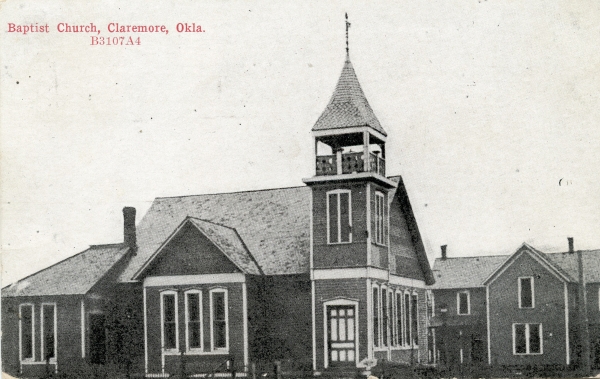
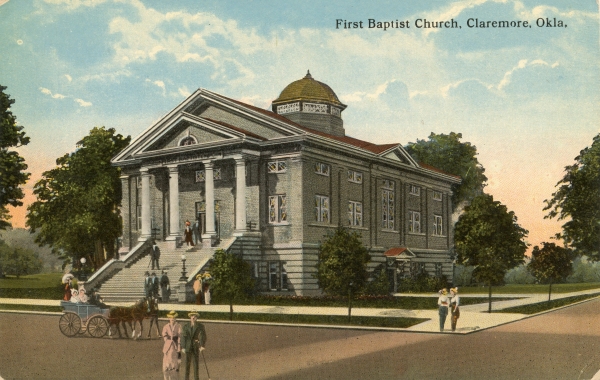
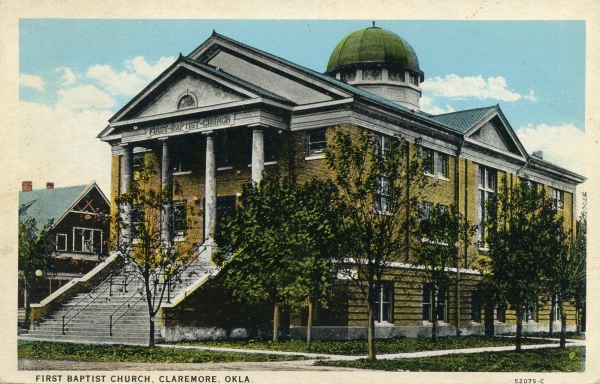
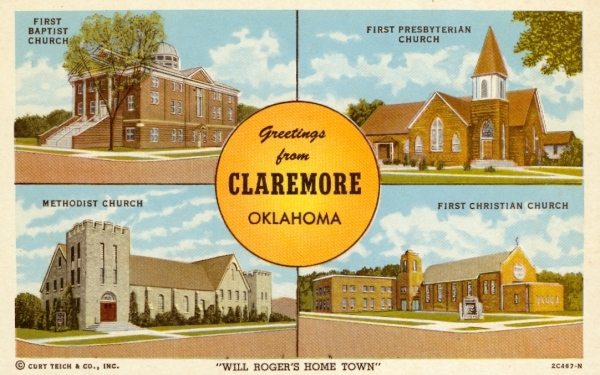
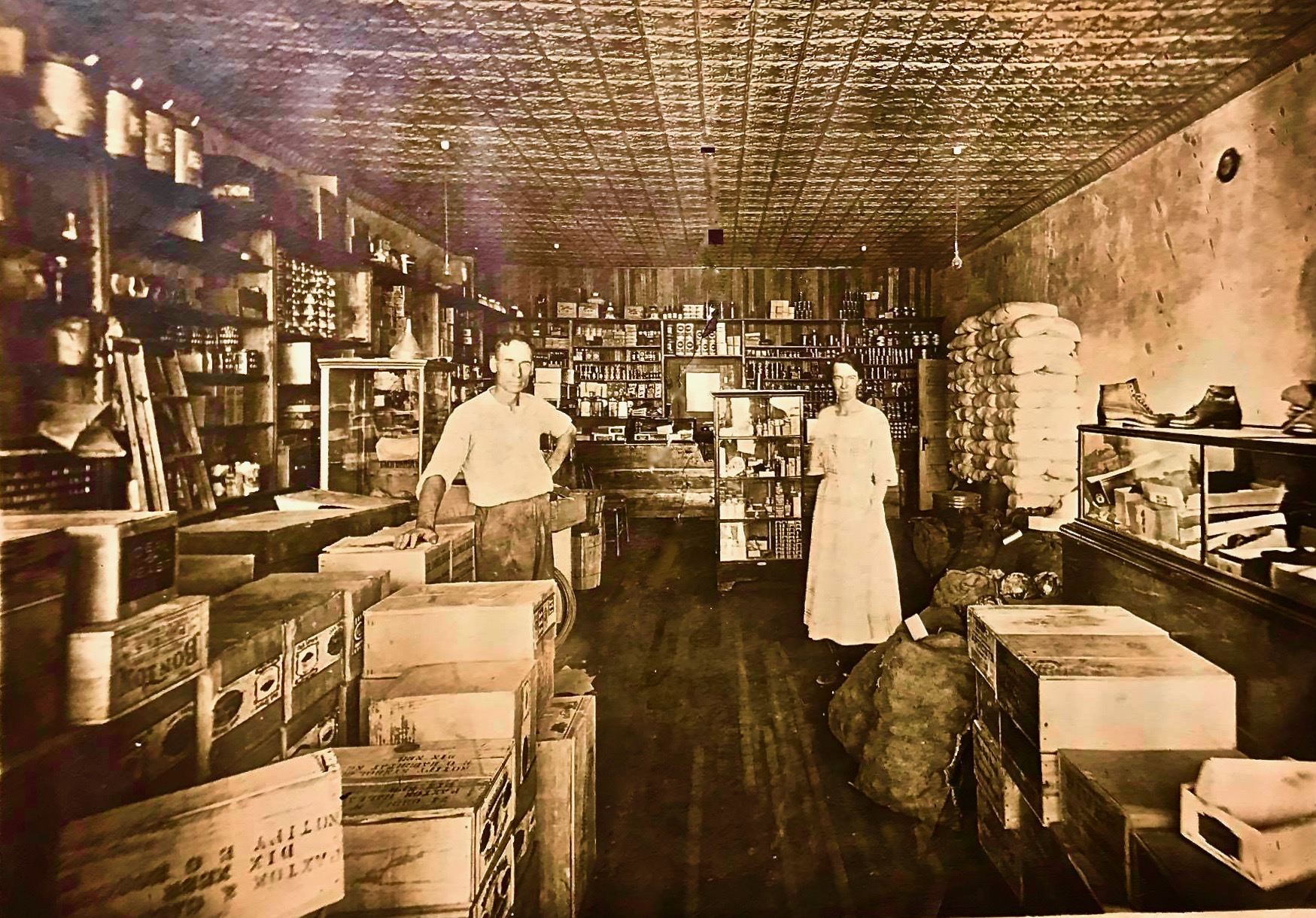
You must be logged in to post a comment.